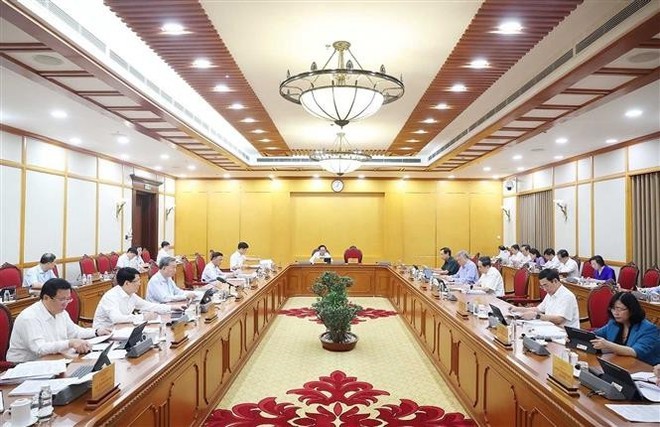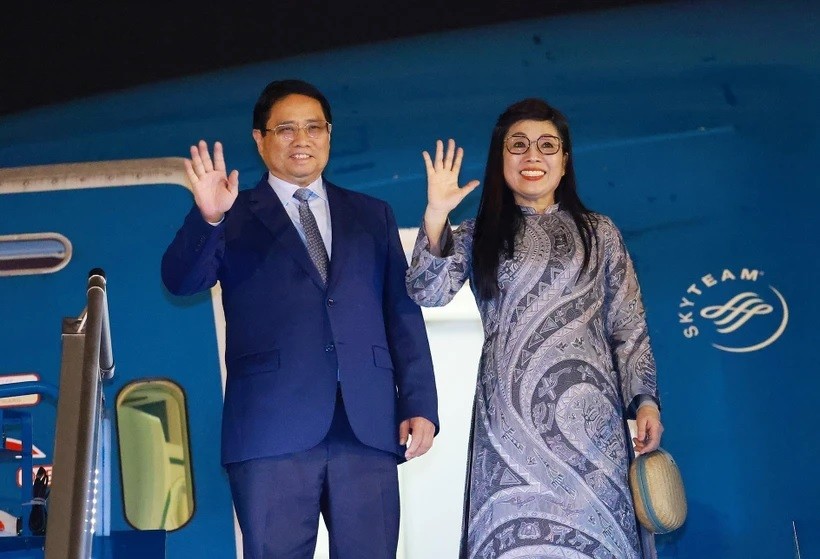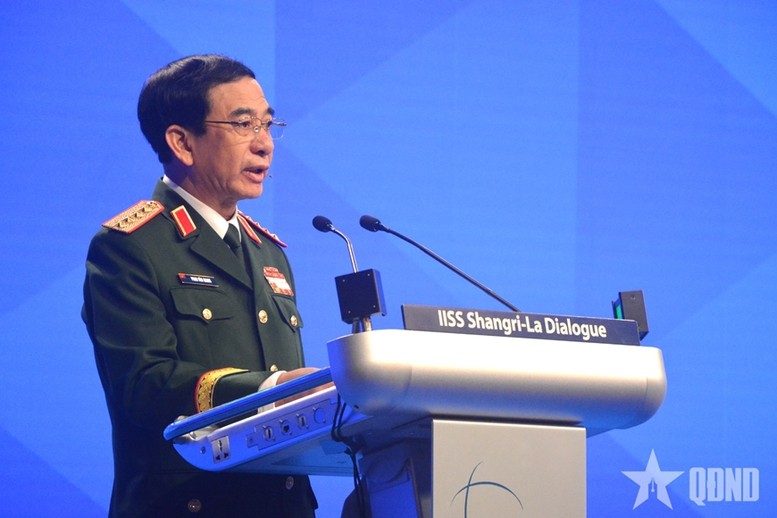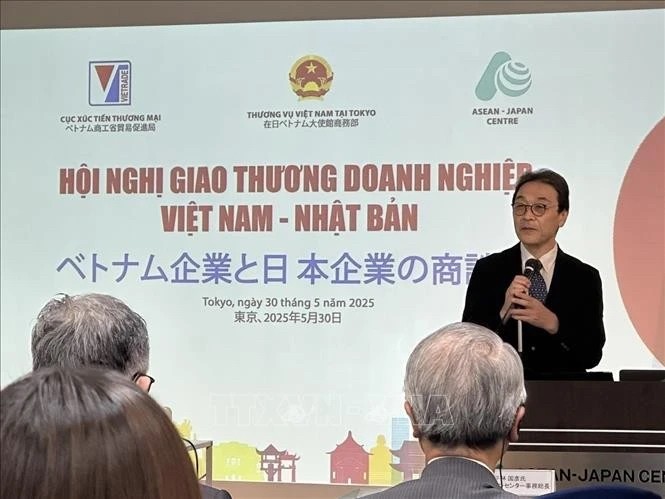The Mystery of Hanoi Hannah
Her name was Trinh Thi Ngo, but she called herself Thu Houng, “The Fragrance of Autumn.” We called her Hanoi Hannah. She was North Vietnam’s chief voice of propaganda, reaching out over the airwaves to American servicemen across South Vietnam, attempting to convince them that the war was immoral and that they should lay down their arms and go home.

Trinh Thi Ngo, also know as Hanoi Hannah
Her job was to chill and frighten, not to charm and seduce. Her English was almost impeccable; men would stumble across her while tuning their radios and be unable to turn away. “How are you G.I. Joe?” she asked in a June 1967 broadcast. “It seems to me that most of you are poorly informed about the going of the war, to say nothing about a correct explanation of your presence over here. Nothing is more confused than to be ordered into a war to die or to be maimed for life without the faintest idea of what’s going on.”
She was born in Hanoi in 1931. Her father owned the largest glass factory in Vietnam. She took a liking to American films. Her favorite was “Gone with the Wind,” which she watched five times. She wanted to enjoy films without the French or Vietnamese subtitles, so her family gave her private English lessons.
She joined the Voice of Vietnam, the country’s largest radio broadcaster, in 1955 as a volunteer. Her unaccented English, correct intonation and her large vocabulary soon got her a staff job reading the news to Asia’s English-speaking countries.
When the first American ground forces, the Marines, landed at Danang in 1965, V.O.V., which was based in the north, started propaganda broadcasts to the troops.
By then the airwaves over North and South Vietnam had become a confusing battleground of conflicting propaganda voices. Working on the premise of “capture their minds and their hearts will follow,” both sides supported dozens of radio stations spewing malice and disinformation 24 hours a day. Hannah’s scripts were written by North Vietnam Army propaganda experts, and advised by Cubans. Her programs were soon extended to 30 minutes and broadcast three times a day.
She was a source of news, as well. Hanoi Hannah broke one of the most shocking stories of the Vietnam War — the massacre of several hundred civilians in the village of My Lai in 1968. Just weeks after the massacre, Hannah accurately named the location and estimated the civilian death toll, but she misidentified the American Army pision involved, enabling the Americans to deny the report and treat it like another example of disinformation from North Vietnam.
I first heard the silken voice of Hanoi Hannah in September 1965, in a Special Forces base at An Lac, about a hundred miles west of Nha Trang. As a news correspondent, I had been on patrol with Montagnard irregulars and their American advisers. It had been raining hard for a week, keeping the supply plane that was my ticket out from coming in. At night after the perimeter was secured there wasn’t much to do but play cards, read, drink Ba Moi Ba beer and listen to the radio. Up there in the Central Highlands, the Voice of Vietnam boomed in loud and clear.
That night Hannah was interspersing Western rock music with her reports. The sounds of the Animals, singing “We Gotta Get Outta This Place,” was followed by Hannah: Now for the war news. American casualties in Vietnam. Army Corporal Larry J. Samples, Canada, Alabama … Staff Sergeant Charles R. Miller, Tucson, Arizona … Sergeant Frank Hererra, Coolige, Arizona.”
Her broadcasts were mostly exaggerated war news, encouragement to “frag” — assassinate — an officer and go AWOL, or suggestions that the soldiers’ wives or girlfriends were cheating on them. She was mostly greeted with loud laughter. But taped interviews with downed pilots or from American antiwar advocates like Jane Fonda were heard with anger.
For bored G.I.s, Hannah’s broadcasts were often rare sources of amusement. A man’s radio was, after his rifle, his most valued possession. Like the rifle butt, the radio was often wrapped in frayed black tape for protection. Troops would laugh over Hannah’s attempts to scare them into defection or suggestions to frag an officer. However, they did wonder if she was as lovely as she sounded, and many considered her the most prominent enemy after Ho Chi Minh.
Hannah regularly addressed her comments to black American G.I.s. In one broadcast, she said, “A Vietnam black G.I. who refuses to be a victim of racism is Billy Smith. It seems on the morning of March 15th a fragmentation grenade went off in an officer’s barracks in Bien Hoa killing two gung-ho lieutenants. Smith was illegally searched, arrested and put in Long Binh jail and brought home for trial. The evidence that showed him guilty was this: being black, poor and against the war and refusing to be a victim of racism.”
When violence broke out in Detroit on July 23, 1967, Hannah jumped on the news. American military stations were quiet; she broadcast every detail she had available.
Mike Roberts, a soldier from Detroit based in Danang, remembers that week well. “Hannah comes on and she knows what guard unit was called in and what kind of weapons were used,” he said. “That’s when it starts to hit home. We knew what kind of fire power and devastation that kind of weapon can do to people, and now those same weapons were turning on us, you know, our own military is killing our own people. We might as well have been Viet Cong. But Hannah picked up on it and talked about it.”
Hanoi Hannah could always be assured of at least the American audience that would hear her broadcasts — the prisoners of war in places like the Hanoi Hilton. John McCain, a Hanoi Hilton inmate for over five years, recently remarked: “I heard Hannah every day. She was a marvelous entertainer. I’m surprised she didn’t get to Hollywood.”
Lt. Cmdr. Ray Voden, shot down over Hanoi on April 3, 1965, listened to her for eight years. “Hannah often stirred up arguments among the P.O.W.s. There were nearly fist fights over the programs. Some guys wanted to hear them, while others tried to ignore them. Personally, I listened because I usually gleaned information, reading between the lines.”
For almost five years after I became a correspondent for ABC News, I would tape-record her programs almost daily, in case she said something newsworthy or presented a captured American pilot on her program. To me, she was just another source of information or disinformation to be checked out and sorted in the communications pudding of the Vietnam War.
In May 1978, I returned to Vietnam and asked the Foreign Ministry to arrange an interview for me with Trinh Thi Ngo. By then Hanoi Hannah had left her beloved Hanoi and moved to Ho Chi Minh City, the renamed city of Saigon, with her husband, who was a southerner and a Vietnamese Army officer. The appointment was set up for the rooftop bar of the Rex Hotel, where I waited along with Ken Watkins, who had been a Marine corpsman and a regular listener to Hannah.
While we waited, Ken recalled his memories of Hannah. “The signal was pretty good around Danang and we would tune in once or twice a week to hear her talk about the war,” he said. “Hannah didn’t necessarily make sense; she used American English, but really didn’t speak our language in spite of hip expressions and hit tunes, even tunes banned on U.S. Army radio. The best thing going for her was that she was female and had a nice soft voice.”
I asked if he was still angry at her. “Sure,” he said, “some antagonism, add it to the Vietnam list. But this trip back is about coming full circle on a lot of things, and she is another voice from the past I want to confront in person.”
So an ex-Marine and an old war correspondent waited that sunny morning for the real Hanoi Hannah to appear, waiting for reality to sweep away the years of bitter images in the windmills of our minds. Dragon Lady? Psy-warrior? Prophet? Or what?
Like so many phantoms of the war, she was not what we imagined. She didn’t look like the “Dragon Lady” from “Terry and the Pirates” comics. Elegant and attractive in a striking yellow ao dai, the Vietnamese traditional dress, she appeared happy to answer our questions.
After she sat down, I asked where she got her information.
“The U.S. Army Stars and Stripes,” she replied, referring to the main military newspaper. “We read from it. We had it flown in every day. We also read Newsweek, Time and several other newspapers. We took remarks of American journalists and put them in our broadcasts, especially about casualties.”
Did she ever feel anger toward the American troops?
“When the bombs came on Hanoi, I did feel angry,” she said. “To the Vietnamese, Hanoi is a sacred ground. But even then, when I spoke to the G.I.s I tried always to be calm. I never felt aggression toward Americans as a people. I never called them the enemy, only adversaries.”
We chatted for a while, about her aims, her successes, her regrets. Then I had one more question — what would she say now, if she had one final broadcast to American G.I.s?
“Let’s let bygones be bygones,” she replied. “Let’s move on and be friends. There will be many benefits if we can be friends together. There is no reason to be enemies.”
Meeting and interviewing Hanoi Hannah was, for me, like being Dorothy parting the curtains hiding the Wizard of Oz. The terrible Hannah behind the facade that we constructed, turned out to be a mild-mannered announcer who spoke English and read the Stars and Stripes.
Trinh Thi Ngo died on Sept. 30, 2016 at the age of 85. She was interred in Long Tri, Chau Than District, Long An province, following the Vietnamese custom of burial next to her husband and his family. Her only son escaped Vietnam in 1973 and now lives in San Francisco.
NYtimes
Recommended
 National
National
Vietnam News Today (Jun. 7): Prime Minister works with Estonian firms to accelerate projects in Vietnam
 National
National
Vietnam News Today (Jun. 6): Foreign Investment in Vietnam Surges in Five Months
 National
National
Vietnam News Today (Jun. 5): PM sets off for attendance at UNOC 3 in France, official visits to Estonia, Sweden
 National
National
Vietnam News Today (Jun. 4): Vietnam - Promising Candidate for Southeast Asia’s Next Powerhouse
 National
National
Shangri-La Dialogue 22: Vietnam Highlights Some Issues of Ensuring Stability in a Competitive World
 National
National
Vietnam News Today (Jun. 3): PM Pham Minh Chinh to Attend UN Ocean Conference, Visit Estonia, Sweden
 National
National
Vietnam News Today (Jun. 2): Vietnamese Trade Mission Sounds Out Business Opportunities in United States
 National
National
